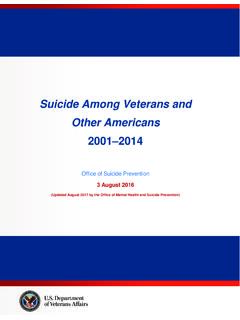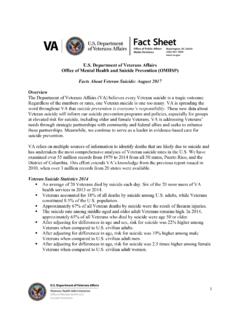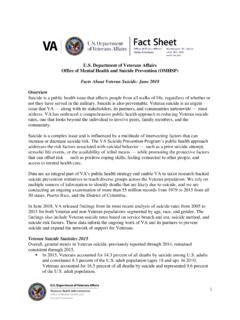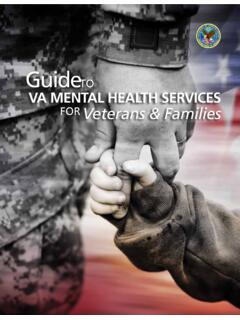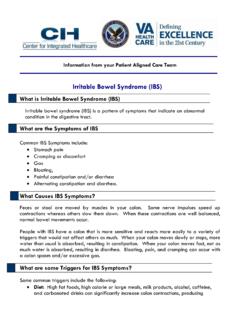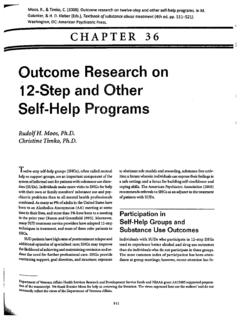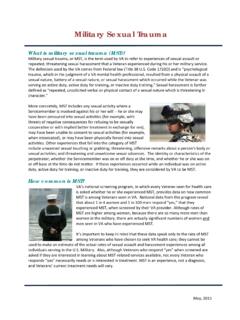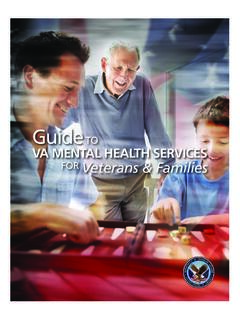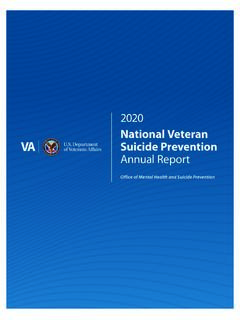Transcription of Participant ID: Date: Interviewer ID (Clinician Initials):
1 Brief Addiction Monitor (BAM) With Scoring & Clinical Guidelines DRAFT 11/02/2009 Participant ID: _____ date : _____ Interviewer ID ( clinician Initials): _____ Method of Administration: clinician Interview Self Report Phone Time Started: _____ : _____ Instructions This is a standard set of questions about several areas of your life such as your health, alcohol and drug use, etc. The questions generally ask about the past 30 days. Please consider each question and answer as accurately as possible. 1. In the past 30 days, would you say your physical health has been? o o o o o Excellent (0) Very Good (1) Good (2) Fair (3) Poor (4) 2. In the past 30 days, how many nights did you have trouble falling asleep or staying asleep? ooooo 0 (0) 1-3 (1) 4-8 (2) 9-15 (3) 16-30 (4) 3.
2 In the past 30 days, how many days have you felt depressed, anxious, angry or very upset throughout most of the day? ooooo 0 (0) 1-3 (1) 4-8 (2) 9-15 (3) 16-30 (4) 4. In the past 30 days, how many days did you drink ANY alcohol? ooooo 0 (Skip to #6) (0) 1-3 (1) 4-8 (2) 9-15 (3) 16-30 (4) 2 5. In the past 30 days, how many days did you have at least 5 drinks (if you are a man) or at least 4 drinks (if you are a woman)? [One drink is considered one shot of hard liquor ( oz.) or 12- ounce can/bottle of beer or 5 ounce glass of wine.] o o o o o 0 (0) 1-3 (1) 4-8 (2) 9-15 (3) 16-30 (4) 6. In the past 30 days, how many days did you use any illegal/street drugs or abuse any prescription medications? o o o o o 0 (Skip to #8) (0) 1-3 (1) 4-8 (2) 9-15 (3) 16-30 (4) 7. In the past 30 days, how many days did you use any of the following drugs: 7A.
3 Marijuana (cannabis, pot, weed)? o o o o o 0 1-3 4-8 9-15 16-30 7B. Sedatives/Tranquilizers ( , benzos , Valium, Xanax, Ativan, Ambien, barbs , Phenobarbital, downers, etc.)? o o o o o 0 1-3 4-8 9-15 16-30 7C. Cocaine/Crack? ooooo 0 1-3 4-8 9-15 16-30 3 7D. Other Stimulants ( , amphetamine, methamphetamine, Dexedrine, Ritalin, Adderall, speed , "crystal meth", ice , etc.)? o o o o o 0 1-3 4-8 9-15 16-30 7E. Opiates ( , Heroin, Morphine, Dilaudid, Demerol, Oxycontin, oxy, codeine (Tylenol 2,3,4), Percocet, Vicodin, Fentanyl, etc.)? o o o o o 0 1-3 4-8 9-15 16-30 7F. Inhalants (glues/adhesives, nail polish remover, paint thinner, etc.)? ooooo 0 1-3 4-8 9-15 16-30 7G. Other drugs (steroids, non-prescription sleep/diet pills, Benadryl, Ephedra, other over- the-counter/unknown medications)?
4 Ooooo 0 1-3 4-8 9-15 16-30 8. In the past 30 days, how much were you bothered by cravings or urges to drink alcohol or use drugs? ooooo Not at all (0) Slightly (1) Moderately (2) Considerably (3) Extremely (4) 4 9. How confident are you in your ability to be completely abstinent (clean) from alcohol and drugs in the next 30 days? ooooo Not at all (0) Slightly (1) Moderately (2) Considerably (3) Extremely (4) 10. In the past 30 days, how many days did you attend self-help meetings like AA or NA to support your recovery? o o o o o 0 (0) 1-3 (1) 4-8 (2) 9-15 (3) 16-30 (4) 11. In the past 30 days, how many days were you in any situations or with any people that might put you at an increased risk for using alcohol or drugs ( , around risky people, places or things )?
5 O o o o o 0 (0) 1-3 (1) 4-8 (2) 9-15 (3) 16-30 (4) 12. Does your religion or spirituality help support your recovery? o o o o o Not at all (0) Slightly (1) Moderately (2) Considerably (3) Extremely (4) 13. In the past 30 days, how many days did you spend much of the time at work, school, or doing volunteer work? ooooo 0 (0) 1-3 (1) 4-8 (2) 9-15 (3) 16-30 (4) 5 14. Do you have enough income (from legal sources) to pay for necessities such as housing, transportation, food and clothing for yourself and your dependents? o o No (0) Yes (4) 15. In the past 30 days, how much have you been bothered by arguments or problems getting along with any family member s or fr iends? o o o o o Not at all (0) Slightly (1) Moderately (2) Considerably (3) Extremely (4) 16.
6 In the past 30 days, how many days were you in contact or spent time with any family members or friends who are supportive of your recovery? ooooo 0 (0) 1-3 (1) 4-8 (2) 9-15 (3) 16-30 (4) 17. How satisfied are you with your progress toward achieving your recovery goals? o o o o o Not at all (4) Slightly (3) Moderately (2) Considerably (1) Extremely (0) Time Finished: _____:_____ 6 Specific items to attend to, and suggested referrals, include: #1 (health), if scored 3 or 4, refer to primary care #3 (mood), if scored 2, 3, or 4, proceed to further assessment and address within SUD specialty care or refer to mental health clinic if indicated #5,6,7 (heavy alcohol use, any drug use, specific drug use), if any scored 1 or higher, discuss with patient and consider adjusting treatment ( , higher level of care or changing modality) #8 (craving), if scored 3 or 4, consider medication such as Naltrexone #14 (adequate income), if scored 0, refer to case management #16 (social support), if scored 0, 1, or 2 consider adding network support #17 (satisfaction with progress), if scored 3 or 4, discuss modifying or supplementing treatment Note.
7 Examining scores from individual items as described above is the most clinically relevant use of this measure. Summary scores are more useful for aggregating across patients. Aggregate scoring, or subscale scoring, is supplementary and very preliminary, based on clinical judgment rather than empirical data. Sum of Items 4, 5, & 6 = Use (Scores range from 0 to 12 with higher scores meaning more Use) Preliminary Subscale Scoring information Sum of Items 1, 2, 3, 8, 11, & 15 = Risk factors (Scores range from 0 to 24 with higher scores meaning more Risk) Sum of Items 9, 10, 12, 13, 14, & 16 = Protective factors (Scores range from 0 to 24 with higher scores meaning more Protection) Number in ( ) is points for each response *Item 7 (7A-7G) are not scored as part of the subscales but provide elaboration for item 6.
8 *Item 17 can be used as an overall assessment of treatment progress, but is not scored on any of the specific subscales. Clinical guidelines:The three subscales include: Useo Any alcohol use (item #4) : If a patient scores a 1 or greater, it calls for further examination and clinical attention, consider addition of pharmacotherapy or higher level of care, add motivational interviewing . o Heavy alcohol use (item #5) o Any drug use (item #6) Risk Factorso Cravings (item #8) : If a patient scores a 12 or greater, it calls for further examination and clinical attention, refer for medical or mental health consulation, add CBT or relapse prevention skills training. o Physical Health (item #1) o Sleep (item #2) o Mood (item #3) o Risky situations (item #11) o Family/social problems (item #15) Protective Factorso Self-efficacy (item #9) : If a patient scores a 12 or below, it calls for further examination and clinical attention, treatment plan might include building sober support networks, 12 step facilitation, or work with a case manager for work or income assistance.
9 O Self-help behaviors (item #10) o Religion/spirituality (item #12) o Work/school participation (item #13) o Adequate Income (item #14) o Sober support (item #16) 7 Notes: It is important to compare most recent BAM scores with prior BAM scores to assess changes in functioning and risk status. o The goal is to see sizeable changes on each scale with each administration of the BAM. It is important to take into consideration the relative scores on risk and protective factors: o If protective factor score is greater than risk factor score, the patient is less at risk for use. Beneficial Risk/Protective Ratio 1 05101520 Risk FactorsProtective Factorso If risk factor score is greater than protective factor score, the patient is more at risk for use. Harmful Risk/Protective Factor Ratio 1 05101520 Risk FactorsProtective Factorso If risk factor score is is equal to protective factor score, the patient is at risk for use and a focus of treatment should be to shift the balance to building protective factors and coping with risk factors.
10 Balanced scores=work on shifting 1 05101520 Risk FactorsProtective Factors
